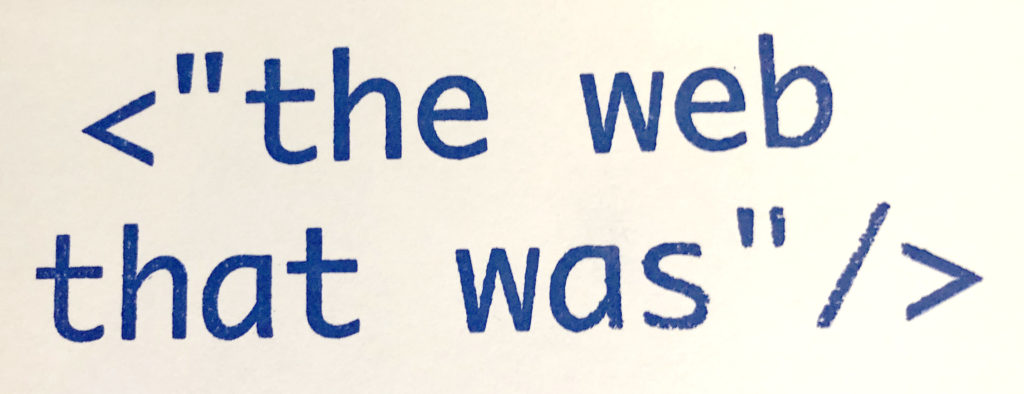
Looking back at 1990s representations of cyberspace always makes one feel alienated, a bit dislocated, and amazed at the same time. Did the American and Western European grasp of the World Wide Web really mix it with imaginations of cyberspace, all of the time? How could the mundane interfaces, modems, and slowly loading websites give rise to such an enthusiastic mapping of online spatiality, creating an unique visual culture of new cyberspaces? Some explanations for this are easier to give: Cyberpunk, Gaming Cultures and Media Arts had been engaged with online spatiality before the Web grew exponentially in a short time. Interlinking public, and especially urban space with representations of digital cities and information landscapes also did not start with the Web, as Kirsten Wagner has shown as early as 2006 (Wagner 2006). Yet some of the Web’s practices became quickly engaged with a translation of urbanity into cyber-urbanity, and affording a new situationist dérive while surfing. John Perry Barlow’s “Declaration of Independence” attempted to remove the cyberspace from the realm of old statehood and legality, while addressing its representatives at the highly localized 1996 World Economic Forum in Davos.
A lot of this resonates in and with Martin Dodge’s and Rob Kitchin’s seminal work of “Mapping Cyberspace” (2000), which we want to revisit here. For them, the “Web has become such a powerful interface and interaction paradigm that is the mode of cyberspace, particularly for the mass of users who only came online since the mid-1990s.” (Dodge/Kitchin 2000, p. 3). Along with Dodge and Kitchin, a slightly more systematic explanation can be made about the dynamics between locating the Internet, and the Web, topographically while at the same time accounting for its feelingly new information spaces and attaching a topological spatiality to them. Relations between topography and topology are, as I would like to argue, always shifting and relational, thereby relying on the evaluations of what kind of indexicality a mapping wants to achieve. So neither is topography bound to mimetic mappings of actual geographic space, nor is topology something only to be found in the realm of abstract diagrammatics and mathematics that refrain from any geo-indexicality. Methodologically, Dodge and Kitchin appropriated the whole range of digital cartographic options at hand, including a multitude of distributed mappings of geographers at universities and telco companies. Geo-indexicality thus almost always remained topical, even if it was absent in representations of, let us say, a hyperlink topology between websites like Ben Fry’s Valence (1999). “[G]eography continues to matter, despite recent rhetoric claiming the ‘death of distance’.” (Dodge/Kitchin 2000, p. x.)
„Circulating Indexicality, Cyberspace and the Early Web“ weiterlesen